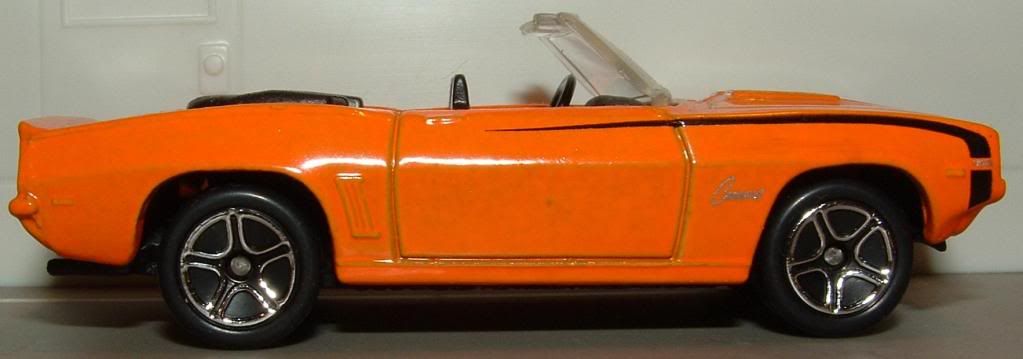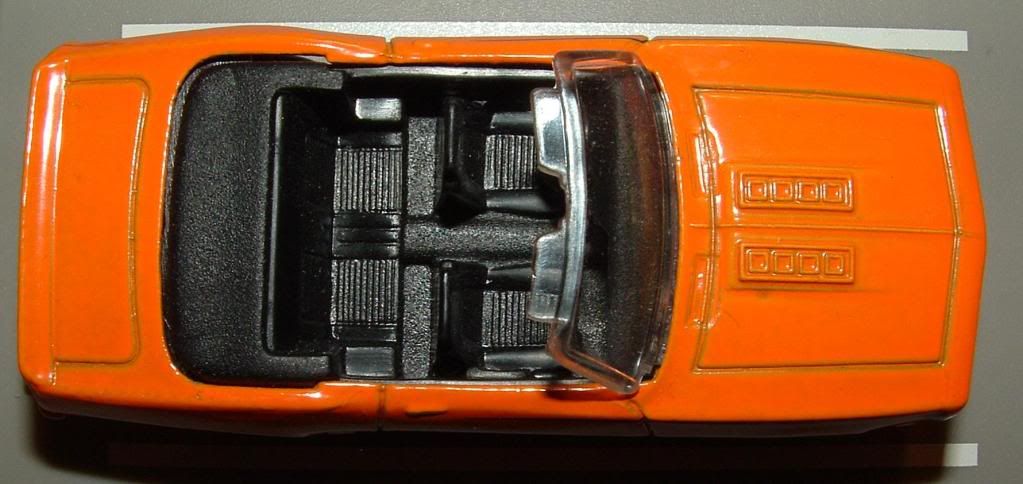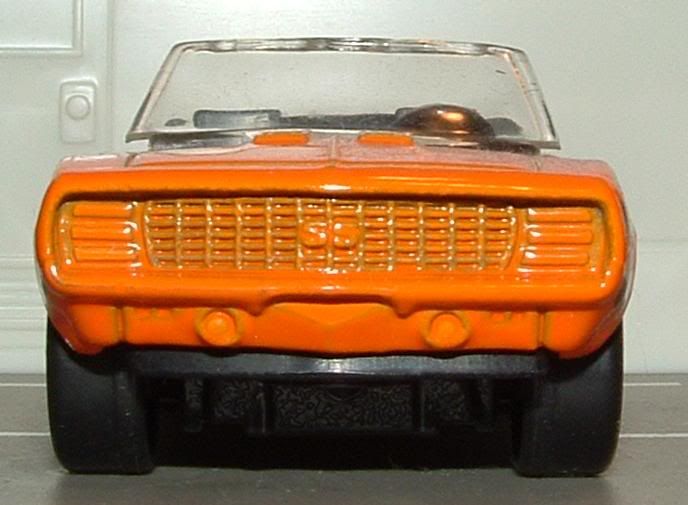
A blog focusing on 1/64 diecast from such popular brands as Hot Wheels, Matchbox, Johnny Lightning, M2 Machines, GreenLight, Tomica, Yat Ming, Majorette, MotorMax, Siku, Corgi, Guisval, Playart, Ertl, Zylmex, Racing Champions, & many more. Swifty's Garage features a daily Car Of The Day and news updates from your favorite brands!
Saturday, September 10, 2011
Car Of The Day: September 9, 2011 (Belated)
Today's car of the day is Matchbox's 1969 Chevrolet Camaro.
The first-generation Chevrolet Camaro appeared on September 26, 1966, for the 1967 model year on an all brand new rear-wheel drive GM F-body platform and would be available as a 2-door, 2+2 seat, coupe or convertible with a choice of six-cylinder and V8 powerplants. The first-gen Camaro would last up through the 1969 model year.
For more information and pictures of the real car please visit: Chevrolet Camaro
In 1995 Johnny Lightning became the game changer in small scale diecast. Muscle Cars USA was a smash hit, even if the castings weren't the best-proportioned. The market was there, and everyone hopped on the bandwagon. Hot Wheels, Racing Champions, and Matchbox all quickly tooled up their own vintage muscle cars. This was one of Matchbox's. It came out in the Mattel era, but may have been a Tyco era casting that was in the works at the time of the takeover (I'm unsure and I don't know if anyone can clarify or not).
The general appearance of the 1969 Camaro did not change much compared to the first two years, having kept the basic body lines and basic "look". This slight transformation was similar to the changes made to the 1968 model to make it look different than the 1967 model. The 1969 Camaro carried over the previous year's drivetrain and major mechanical components, but all-new sheetmetal, except the hood and trunk lid, gave the car a substantially sportier look. The grille was redesigned with a heavy "V" cant and deeply inset headlights. New door skins, rear quarter panels, and rear valance panel also gave the car a much lower, wider, more aggressive look. This styling would serve for the 1969 model year only. Collectors often debate the merits of smooth, rounded lines of 1967 and 1968 model versus the heavily creased and sportier looks of the 1969.
Several new performance options were available for the 1969 model year.
To increase competitiveness in the SCCA Trans Am racing series, optional four wheel disc brakes with four-piston calipers were made available during the year, under RPO JL8, for US$500.30. This system used components from the Corvette and made for a major improvement in the braking capability and was a key to winning the Trans Am championship.
The Rally Sport (RS) option, RPO Z22, Z22 Rally Sport Package; includes special black painted grille with concealed headlights and headlight washer, fender striping (except when sport striping or Z28 Special Performance Package is specified), simulated rear fender louvers, front and rear wheel opening moldings, black body sill, RS emblems on grille, steering wheel and rear panel, Rally Sport front fender nameplates, bright accented taillights, back-up lights below rear bumper; also includes bright roof drip moldings on Sport Coupe. $131.65, 37,773 built. This option could be added to any other option IE- SS or Z/28, making the model an RS/SS or a z/28/RS.
The Z28 performance option could also be had with dealer-installed dual four-barrel crossram intake manifold (shipped in the trunk).
Also available was the F41 suspension, which had staggered shocks, multi-leaf springs in back, faster-ratio steering box, and 15 in (38 cm) by 7 in (18 cm) rims.
A GM corporate edict forbade Chevrolet from installing engines larger than 400 cu in (6.6 l). Requests from dealers (notably Yenko) who were dealer-installing 427 cu in (7.0 l) engines in the Camaro caused Chevrolet to use an ordering process usually used on fleet and special orders (taxis, trucks, etc.) to offer 427 engines in the Camaro. Two Central Office Production Orders (COPO), numbers 9560 and 9561, were offered in the 1969 model year. The COPO 9561 option brought the solid lifter L72 big-block engine, making an underrated 425 hp (317 kW) gross. Dealer Don Yenko ordered 201 of these cars to create the now-legendary Yenko Camaro. Other dealers also became aware of the L72 engine package and ordered it. Around 1,015 Camaros were fitted with the L72 engine option
The 1969 model year was exceptionally long, extending into November 1969, due to engineering problems that delayed the introduction of the second generation model planned for 1970. It is a popular myth late-'69 Camaros were sold as 1970 models (due to GM publicity pictures of the '69 Camaro labeled as a 1970), but they were all assigned 1969 VIN codes. The proposed '69 SS350, intended to address the delay, was instead sold as a '70.
Subscribe to:
Post Comments (Atom)






No comments:
Post a Comment